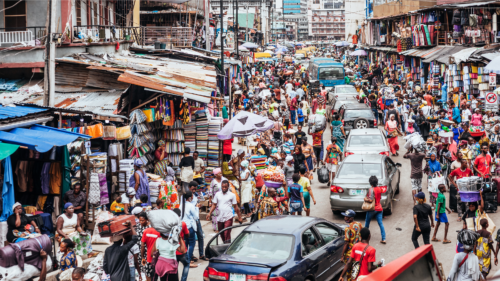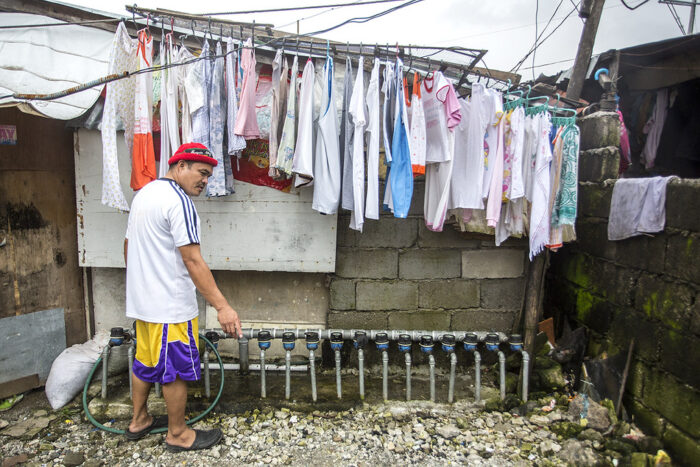Are Cities Ready for Growing Climate-Related Migration?

The world is witnessing the highest levels of migration on record, and climate change will increasingly drive this trend. Climate-related disasters such as storms and floods, as well as longer-term stresses like rising temperatures and drought, can damage livelihoods and critical infrastructure and push people to seek better locations to live.
Research shows that most climate-related migrants stay within national borders, with about 70% of these migrants settling in cities. Urban areas are attractive to migrants due to perceived diverse income opportunities and better access to services like education and healthcare. This includes both megacities and small to medium-sized cities.
Estimates indicate that by 2050 over 216 million people could move within their countries for climate-related reasons. Sub-Saharan Africa alone could see as many as 86 million internal climate migrants.
Outcomes for Migrants and Cities can be Positive or Negative
For municipal leaders and communities in USAID partner countries, this trend presents both challenges and opportunities. A lack of preparation for the growth in migration to increasingly crowded cities will worsen existing social, economic, and environmental stresses. Experience suggests, however, that if planned for and managed well, there are benefits for migrants and receiving communities. Migrants can have opportunities for increased income and skills and find greater access to services – but these benefits are not granted to all urban residents equally or automatically. Cities that proactively provide services and economic opportunities to migrants, as well as existing receiving communities, can grow their economic base and improve development outcomes beyond migrant populations.
Read the new paper: Climate-Related Migration: Challenges and Opportunities in Urban Destinations

USAID’s Migration as a Climate Adaptation Strategy paper makes the case that proactive migration in response to climate impacts is considered adaptation when it provides positive outcomes and improves migrants’ resilience. As climate impacts evolve, migration may be a critical form of adaptation.
Opportunities for Supporting Climate Migrants in Urban Destinations
To achieve positive outcomes and avoid negative ones from increasing climate-related migration, it is crucial for institutions, policies, and programs in receiving urban areas to effectively support migrants and communities and leverage the benefits of mobility. Research identifies the following key strategies to manage climate-related migration, which are reflective of broader best practices for urban resilience:
- Accommodating population growth with resilient urban planning based on best available data. Given scarce resources, municipal governments need accurate and inclusive data for planning that reflects the needs of the most vulnerable, including urban migrants and those living in informal settlements.
- Ensuring that those who move into cities are welcomed and included through social integration and inclusion. Stakeholders can assist receiving communities in integrating migrants into the social fabric of the city.
- Ensuring that newcomers have equitable access to urban services. Support can be provided to stakeholders to establish holistic and easily accessible service points in receiving communities. These should be migrant-inclusive, offer relevant information on basic services in a gender- and disability-responsive manner, and facilitate safe and effective access.
- Provide support to secondary cities to attract and absorb climate-related migrants through climate adaptation, economic inclusion, and financial opportunity. Supporting formalization of the informal economy through economic inclusion enables more people to access finance, link to value chains, and access government relief measures in times of crisis.
Given the multi-faceted impacts of climate-related migration, a systems approach is needed that both responds to the needs of migrants and also strengthens the provision of goods and services for receiving cities. Responding to this challenge requires inclusive and equitable solutions that account for future growth through flexibility and adaptability.
Read more on USAID’s UrbanLinks website.
Please send questions or requests to: Monica Bansal, Green Cities Division Lead, at: mbansal@usaid.gov
About the Report
The Climate-related Migration: Challenges and Opportunities in Urban Destinations white paper provides analysis and evidence of climate-related migration in developing countries, with a focus on urban destinations and support for migrants and receiving communities through policy and programming. It complements and supports related USAID and U.S. Government policies, strategies, and analyses, including the:

